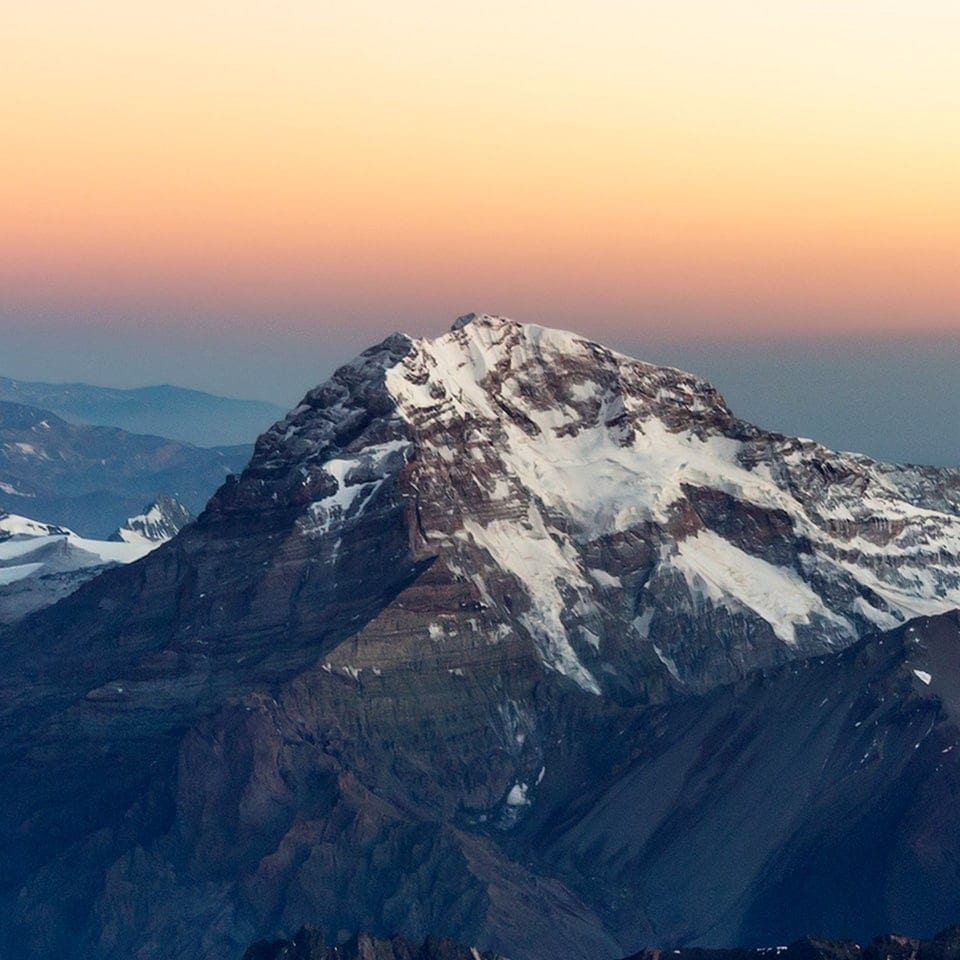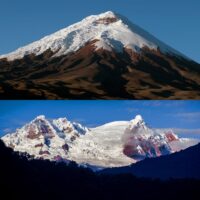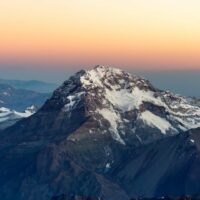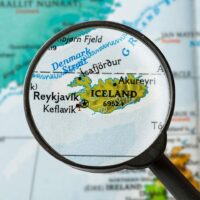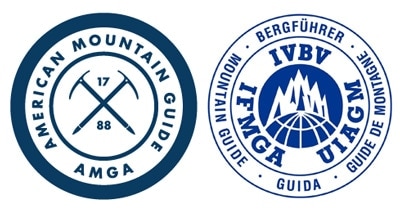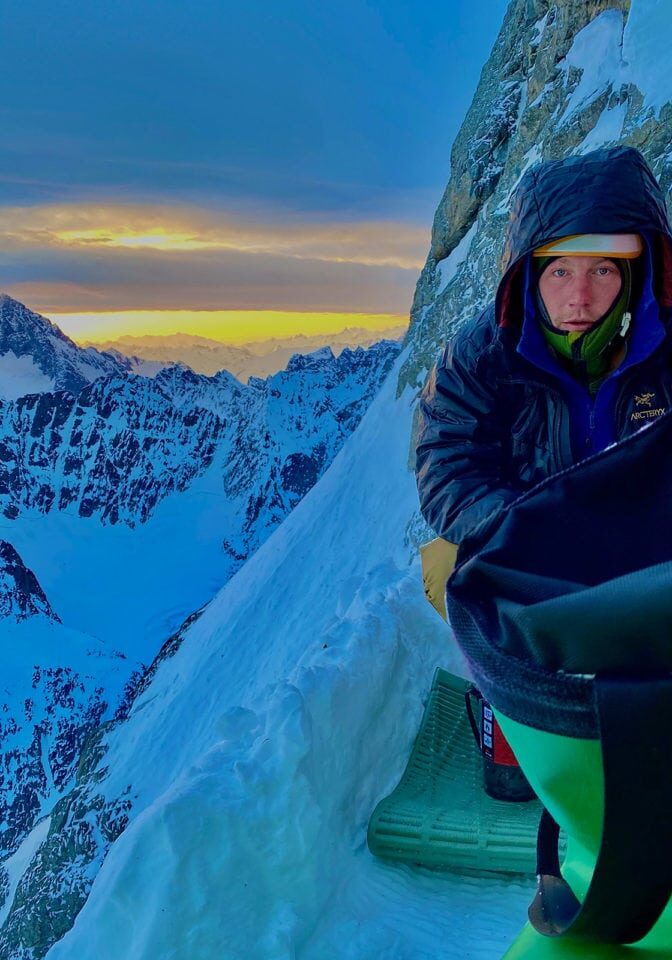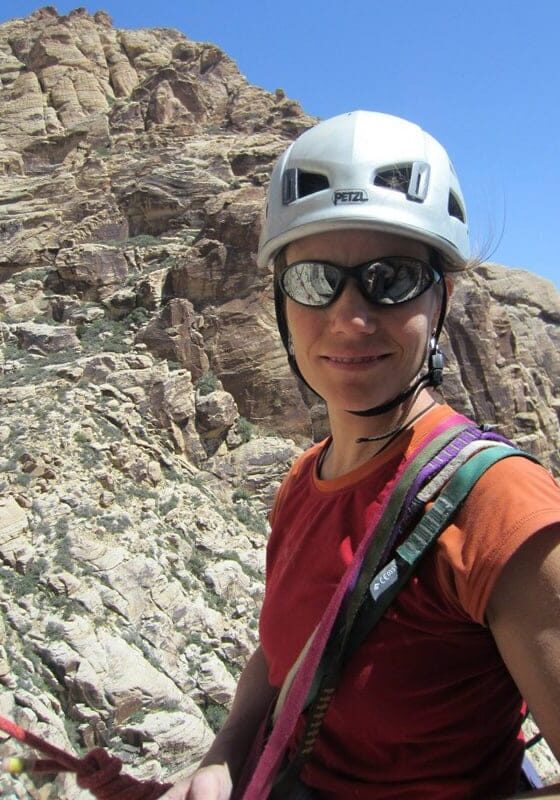The following info may change for future trips.
Our expedition to Aconcagua will take twenty days, including travel from North America. This trip will be lead by Paul Cormier, who has led several expeditions to Aconcagua in the past, including three summits. He is a veteran climber in the Andes with more than 20 expeditions under his belt to Argentina, Bolivia and Ecuador. Sean Lorway, an AMGA certified guide, will be the assistant guide. You can travel down to Mendoza with Paul and Sean or meet them at the airport upon arrival.
Day 1: Fly to Mendoza, Argentina, staying in a hotel that night.
Day 2: We awake early to begin a busy day. Climbing permits must be acquired, followed by organizing gear and repacking food. We will visit the local Club Andinista to review mountain conditions, and a history of climbing on Aconcagua.
Day 3: A morning bus ride of four hours brings us, and our vast amount of gear, to the tiny village Las Penitentes, where we meet our muleteer, who will be in charge of carrying most of our equipment to Base Camp on mule-back. We spend the night in the village’s one ancient, picturesque hotel.
Day 4: Today we begin the first leg of the journey to Base Camp. With light packs, we hike up the Horcones Valley, crossing the river Horcones on a suspension footbridge built for the film Seven Years in Tibet. We spend the night at the grassy Confluencia Camp (3,390 meters).
Day 5: From the Confluencia Camp, a long day of moderate hiking and scree fields gets us to Base Camp, known as Plaza de Mulas (4,300 meters). We build rock wind walls and pitch our tents.
Day 6: Today is the first of several “rest days,” designed to let the body adjust more fully to altitude. But we will keep busy by repacking the gear left here for us by the mules. Short hikes to take in the views keep the blood flowing and our bodies adjusting.
Day 7: Today we carry a light load of gear up to Camp I, Plaza Canada, at 5,050 meters. We stash our ferried gear under rocks at camp, and begin building wind walls and making flat tent sites. In the afternoon, we return to Base Camp to eat and sleep.
Day 8: This is our first Move Day. All of the belongings we will need higher on the mountain are packed up and carried several hours back to Plaza Canada. We finish our wind walls at this camp, and settle in for the night.
Day 9: Rest day at Plaza Canada. We hydrate and take short hikes while adjusting to life at 16,000 feet, higher than any point in the Lower 48.
Day 10: Now we carry a load up to Camp II, Nido de Condores, the “Condor’s Nest.” This high plateau is sheltered by alien-looking rock pinnacles on an otherwise-wind swept slope. Return to Camp I to sleep.
Day 11: Camp I is packed up and we move to Nido de Condores. This hike of about five hours gives us plenty of time in the afternoon to build a solid campsite.
Day 12: Just as other parties, both guided and independent, start to get antsy and sprint for the top, we will take it easy at the beautiful Nido de Condores for the day. We drink lots of water and eat as much as we can.
Day 13: Now we move up to our high camp, Berlin Camp, at 5,930 meters, or 19,455 feet. This is higher than any camp on Denali, and akin to Camp I on Everest! Though we don’t have too far to go on this day, we move slowly due to the altitude and fairly heavy packs. This is a “single carry” move from Camp II, so we bring just the essentials.
Day 14: SUMMIT DAY. If things have gone roughly to plan, this will be the first day where we have an opportunity to summit. Our summit bid starts before sunrise, and we may spend as long as ten hours traveling up rock slopes mixed with snow and ice patches. Today we will be bringing crampons to wear while crossing long ice slopes. We ascend over 3,000 vertical feet to the 22,841-foot summit.
No matter how summit day goes, we will be returning to camp in the early afternoon. This gives us time to break camp and make the short descent to Nido de Condores, a much more comfortable place to recover from our summit bid!
Day 15: Today we descend to Base Camp. Once in camp, all of our trash, plus most of our climbing gear, will have to be repacked and brought out by mule.
Day 16: This day can be used as an additional rest day before hiking out from base camp, or as an extra day higher on the mountain, should weather or other circumstances slow us down.
Day 17: We begin the hike out from Base Camp in our hiking boots, no need for clunky insulated footwear down here! Spend one more night in our tents at Confluencia Camp.
Day 18: Hike out to Las Penitentes. Celebrate our adventure with showers and clean beds!
Day 19: Return on bus to Mendoza and get ready to fly home. Spend this last night in the hotel, enjoying Argentina’s famous wine and steak!
Day 20: Take cabs from the hotel to the airport and fly home.

